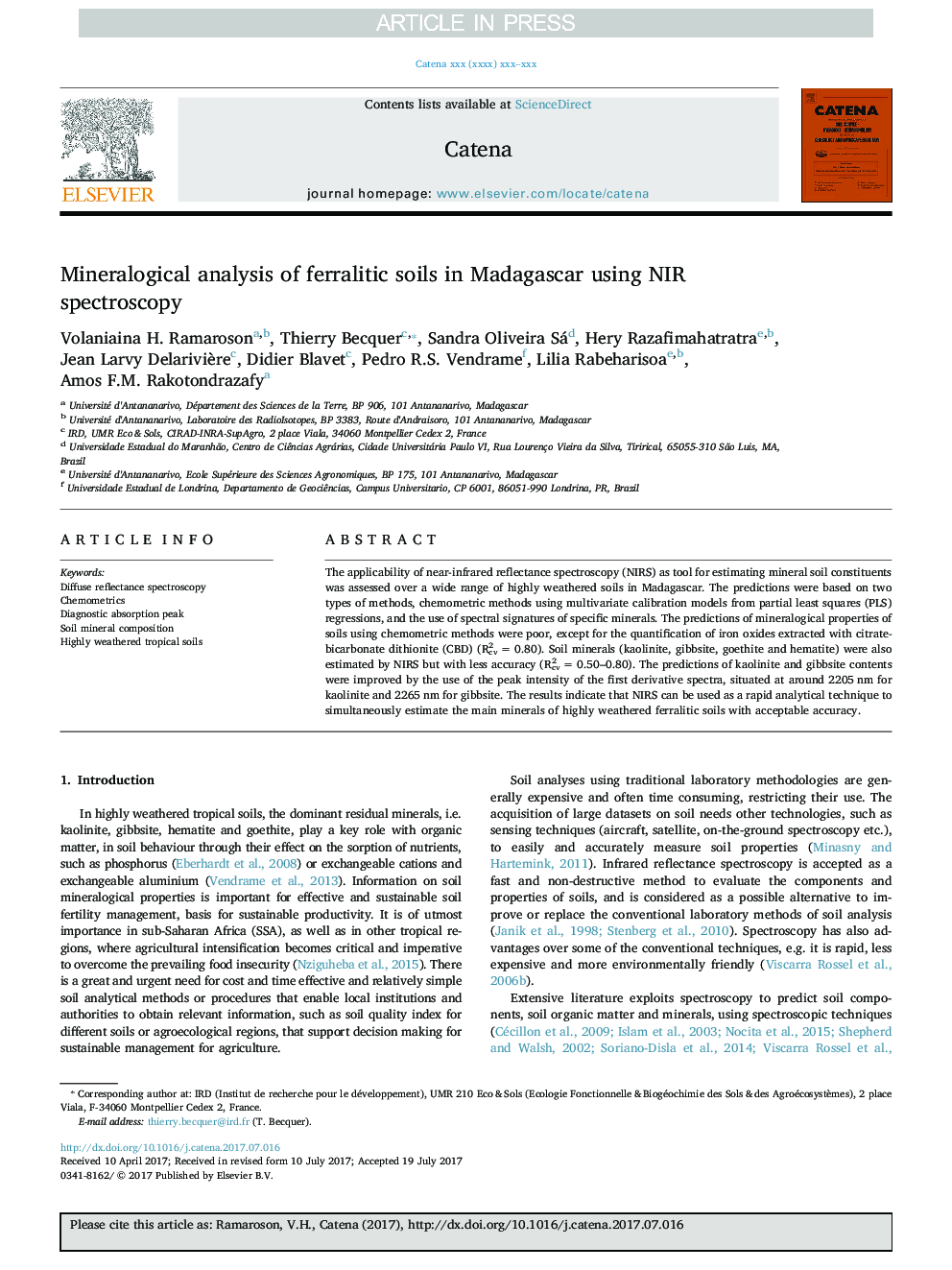| Article ID | Journal | Published Year | Pages | File Type |
|---|---|---|---|---|
| 8893451 | CATENA | 2018 | 8 Pages |
Abstract
The applicability of near-infrared reflectance spectroscopy (NIRS) as tool for estimating mineral soil constituents was assessed over a wide range of highly weathered soils in Madagascar. The predictions were based on two types of methods, chemometric methods using multivariate calibration models from partial least squares (PLS) regressions, and the use of spectral signatures of specific minerals. The predictions of mineralogical properties of soils using chemometric methods were poor, except for the quantification of iron oxides extracted with citrate-bicarbonate dithionite (CBD) (R2cv = 0.80). Soil minerals (kaolinite, gibbsite, goethite and hematite) were also estimated by NIRS but with less accuracy (R2cv = 0.50-0.80). The predictions of kaolinite and gibbsite contents were improved by the use of the peak intensity of the first derivative spectra, situated at around 2205 nm for kaolinite and 2265 nm for gibbsite. The results indicate that NIRS can be used as a rapid analytical technique to simultaneously estimate the main minerals of highly weathered ferralitic soils with acceptable accuracy.
Related Topics
Physical Sciences and Engineering
Earth and Planetary Sciences
Earth-Surface Processes
Authors
Volaniaina H. Ramaroson, Thierry Becquer, Sandra Oliveira Sá, Hery Razafimahatratra, Jean Larvy Delarivière, Didier Blavet, Pedro R.S. Vendrame, Lilia Rabeharisoa, Amos F.M. Rakotondrazafy,
